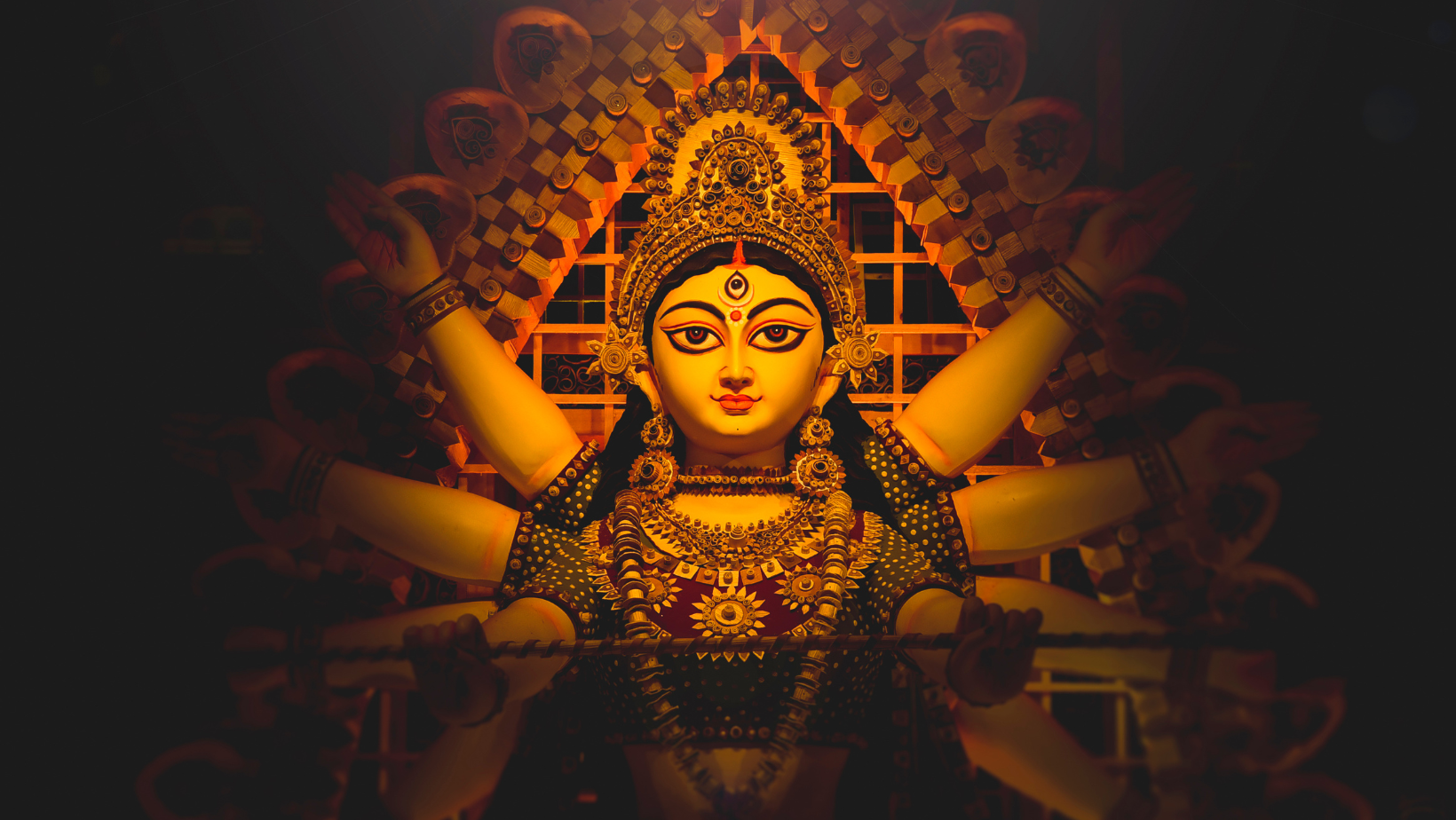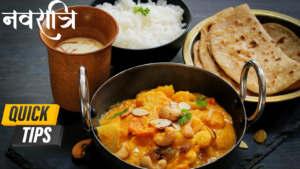When is Navratri in 2023? | A Complete Guide to the Nine-Day Hindu Festival
Navratri is a nine-day Hindu festival that celebrates the victory of good over evil. It is celebrated twice a year, once in the spring and once in the fall. The spring Navratri is known as Chaitra Navratri and the fall Navratri is known as Sharad Navratri.
In 2023, Sharad Navratri will begin on October 15th and end on October 24th.
When is Navratri in 2023?
Navratri is a nine-day Hindu festival that celebrates the victory of good over evil. It is one of the most important festivals in the Hindu calendar and is celebrated with great fervor and enthusiasm all over the world.
When is Navratri in 2023?
Navratri in 2023 will begin on Sunday, October 15th and end on Monday, October 23rd.
When is Navratri in 2023? – Different types of Navratri
There are four types of Navratri celebrated throughout the year:
- Chaitra Navratri: Celebrated in the month of Chaitra (March-April)
- Shardiya Navratri: Celebrated in the month of Ashwin (September-October)
- Magha Navratri: Celebrated in the month of Magha (January-February)
- Ashada Navratri: Celebrated in the month of Ashada (June-July)
The most popular and widely celebrated Navratri is Shardiya Navratri, which is also known as Maha Navratri. It is celebrated in the autumn season and is dedicated to the worship of Goddess Durga.
Significance of Navratri
Navratri is a time to celebrate the power and divinity of Goddess Durga. It is also a time to reflect on our own lives and to make a commitment to change for the better.
During Navratri, Hindus fast for nine days and worship Goddess Durga in her nine different forms. These nine forms are:
- Shailputri
- Brahmacharini
- Chandraghanta
- Kushmanda
- Skandamata
- Katyayani
- Kaalratri
- Mahagauri
- Siddhidatri
Each form of Goddess Durga represents a different aspect of her divine power. For example, Shailputri represents the power of nature, while Brahmacharini represents the power of knowledge.
How to celebrate Navratri
There are many different ways to celebrate Navratri. Some people fast for nine days and worship Goddess Durga at home. Others attend special Navratri celebrations at temples or community centers.
During Navratri, many people also participate in traditional dances, such as Garba and Dandiya Raas. These dances are a way to celebrate the joy of Navratri and to connect with the divine energy of Goddess Durga.
Here are some tips for celebrating Navratri at home:
- Clean and decorate your home.
- Set up a puja altar and place a kalash (pot) filled with water and a coconut on it.
- Place idols or pictures of Goddess Durga on the altar.
- Offer flowers, fruits, and sweets to Goddess Durga.
- Light a lamp and incense sticks.
- Chant mantras or sing devotional songs in praise of Goddess Durga.
- Pray to Goddess Durga for her blessings.
Here are some tips for celebrating Navratri at a temple or community center:
- Attend special Navratri celebrations at a temple or community center.
- Participate in traditional dances, such as Garba and Dandiya Raas.
- Listen to devotional music and watch cultural performances.
- Enjoy the delicious food that is served at Navratri celebrations.
Benefits of celebrating Navratri
Celebrating Navratri has many benefits, both physical and spiritual. Some of the physical benefits of celebrating Navratri include:
- Reducing stress and anxiety
- Improving mental focus and concentration
- Boosting the immune system
- Promoting healing
Some of the spiritual benefits of celebrating Navratri include:
- Deepening your connection with Goddess Durga
- Receiving her blessings and guidance
- Cultivating positive qualities such as compassion, love, and forgiveness
- Achieving spiritual growth and development
Conclusion
Navratri is a sacred time to celebrate the power and divinity of Goddess Durga. It is a time to reflect on our own lives and to make a commitment to change for the better.
There are many different ways to celebrate Navratri. You can celebrate it at home, at a temple, or at a community center. No matter how you choose to celebrate it, make sure to do it with devotion and sincerity.
Here are some additional facts about Navratri:
- Navratri is a Sanskrit word that means “nine nights.”
- Navratri is celebrated twice a year, in the spring and autumn seasons.
- The spring Navratri is dedicated to the worship of Goddess Saraswati, the goddess of knowledge and music.
- The autumn Navratri is dedicated to the worship of Goddess Durga, the goddess of power and protection.
Navratri is a time for celebration and spiritual growth. It is a time to come together with family and friends to worship Goddess Durga and to celebrate her victory over evil. It is also a time to reflect on our own lives and to make a commitment to change for the better.
There are many different ways to celebrate Navratri. Some people fast for nine days and worship Goddess Durga at home. Others attend special Navratri celebrations at temples or community centers. Many people also participate in traditional dances, such as Garba and Dandiya Raas.
No matter how you choose to celebrate Navratri, make sure to do it with devotion and sincerity. Here are some additional tips for celebrating Navratri:
- Read about the nine forms of Goddess Durga. This will help you to better understand her power and divinity.
- Meditate on the qualities of Goddess Durga. She is a powerful warrior goddess, but she is also compassionate and loving. Meditate on the qualities that you admire in her and ask her to help you develop those qualities within yourself.
- Chant mantras or sing devotional songs in praise of Goddess Durga. This is a beautiful way to connect with her energy and to receive her blessings.
- Serve others. Navratri is a time to give back to the community and to help those in need. Volunteer your time to a charity or organization that you care about.
- Be grateful for all that you have. Navratri is a time to reflect on our blessings and to be grateful for all that we have. Take some time each day to think about the things that you are grateful for, both big and small.
Here are some additional facts about Navratri:
- Navratri is celebrated in many different countries around the world, including India, Nepal, Bangladesh, Sri Lanka, and Trinidad and Tobago.
- Navratri is a popular time for people to get married. It is believed that marriages performed during Navratri are blessed by Goddess Durga.
- Navratri is also a popular time for people to start new businesses or ventures. It is believed that new beginnings started during Navratri are more likely to be successful.
Conclusion
Navratri is a sacred time to celebrate the power and divinity of Goddess Durga. It is a time to reflect on our own lives and to make a commitment to change for the better.
Frequently Asked Questions about Navratri in 2023
Q: When is Navratri in 2023?
A: Navratri in 2023 will begin on Sunday, October 15th and end on Monday, October 23rd.
Q: What are the different types of Navratri?
A: There are four types of Navratri celebrated throughout the year: Chaitra Navratri, Shardiya Navratri, Magha Navratri, and Ashada Navratri. Shardiya Navratri, also known as Maha Navratri, is the most popular and widely celebrated Navratri.
Q: What is the significance of Navratri?
A: Navratri is a time to celebrate the victory of good over evil and to worship Goddess Durga in her nine different forms. It is also a time to reflect on our own lives and to make a commitment to change for the better.
Q: How do people celebrate Navratri?
A: There are many different ways to celebrate Navratri. Some people fast for nine days and worship Goddess Durga at home. Others attend special Navratri celebrations at temples or community centers. Many people also participate in traditional dances, such as Garba and Dandiya Raas.
Q: What are some tips for celebrating Navratri at home?
A: Here are some tips for celebrating Navratri at home:
- Clean and decorate your home.
- Set up a puja altar and place a kalash (pot) filled with water and a coconut on it.
- Place idols or pictures of Goddess Durga on the altar.
- Offer flowers, fruits, and sweets to Goddess Durga.
- Light a lamp and incense sticks.
- Chant mantras or sing devotional songs in praise of Goddess Durga.
- Pray to Goddess Durga for her blessings.
Q: What are some tips for celebrating Navratri at a temple or community center?
A: Here are some tips for celebrating Navratri at a temple or community center:
- Attend special Navratri celebrations at a temple or community center.
- Participate in traditional dances, such as Garba and Dandiya Raas.
- Listen to devotional music and watch cultural performances.
- Enjoy the delicious food that is served at Navratri celebrations.
Q: What are the benefits of celebrating Navratri?
A: Celebrating Navratri has many benefits, both physical and spiritual. Some of the physical benefits of celebrating Navratri include:
- Reducing stress and anxiety
- Improving mental focus and concentration
- Boosting the immune system
- Promoting healing
Some of the spiritual benefits of celebrating Navratri include:
- Deepening your connection with Goddess Durga
- Receiving her blessings and guidance
- Cultivating positive qualities such as compassion, love, and forgiveness
- Achieving spiritual growth and development
Q: What are the nine forms of Goddess Durga?
A: The nine forms of Goddess Durga are:
- Shailputri
- Brahmacharini
- Chandraghanta
- Kushmanda
- Skandamata
- Katyayani
- Kaalratri
- Mahagauri
- Siddhidatri
Q: What is the importance of each form of Goddess Durga?
A: Each form of Goddess Durga represents a different aspect of her divine power. For example, Shailputri represents the power of nature, while Brahmacharini represents the power of knowledge.
Q: What are some popular Navratri mantras?
A: Here are some popular Navratri mantras:
- Om Jai Durga
- Om Dum Durgayei Namaha
- Om Namah Shivaya
- Om Jai Mata Di
- Om Shree Durgayai Namah
May Goddess Durga bless you with all the happiness, peace, and prosperity that you deserve.
Navratri Fasting Rules and Tips
Navratri Fasting Rules and Tips Navratri Fasting Rules: Navratri is...
Read MoreNavratri Fast: Everything You Need to Know
Navratri Fast: Food Guide Navratri is a nine-day Hindu festival...
Read MoreA Step-by-Step Guide to Performing Aarti during Navratri
Navratri Aarti नवरात्रि में आरती कैसे करें: एक आसान गाइड...
Read MoreEssential Navratri Puja Samagri: Your Complete Checklist
Navratri Puja Samagri नवरात्रि पूजा सामग्री की पूरी सूची: घर...
Read MoreNavratri Puja Vidhi: A Step-by-Step Guide to Worshipping Goddess Durga
Navratri Puja Vidhi नवरात्रि पूजा विधि: घर पर नवरात्रि पूजा...
Read MoreHow To Do Navratri Puja At Home
How To Do Navratri Puja At Home? A Step-by-Step Guide...
Read More







1 thought on “When is Navratri in 2023”